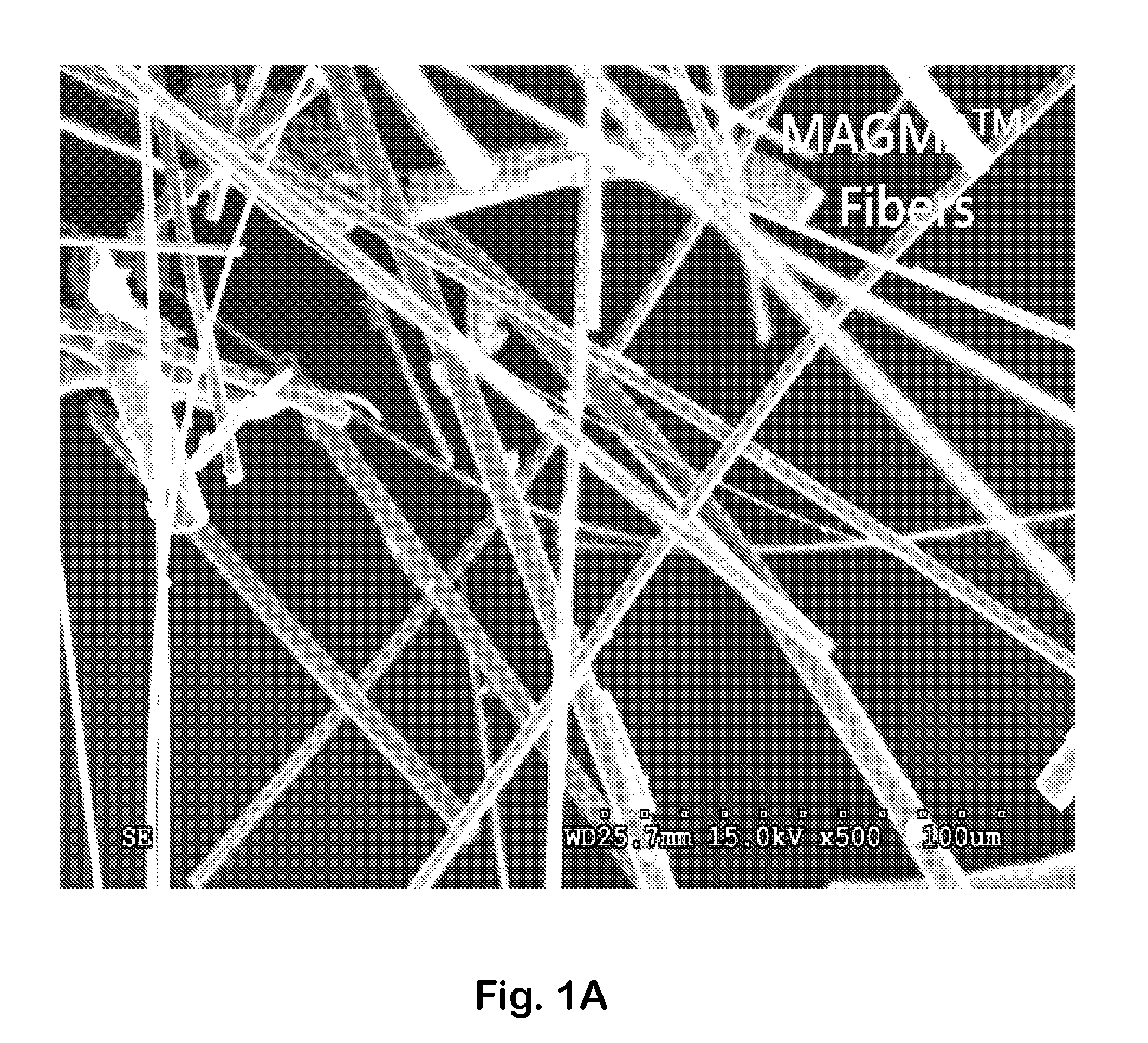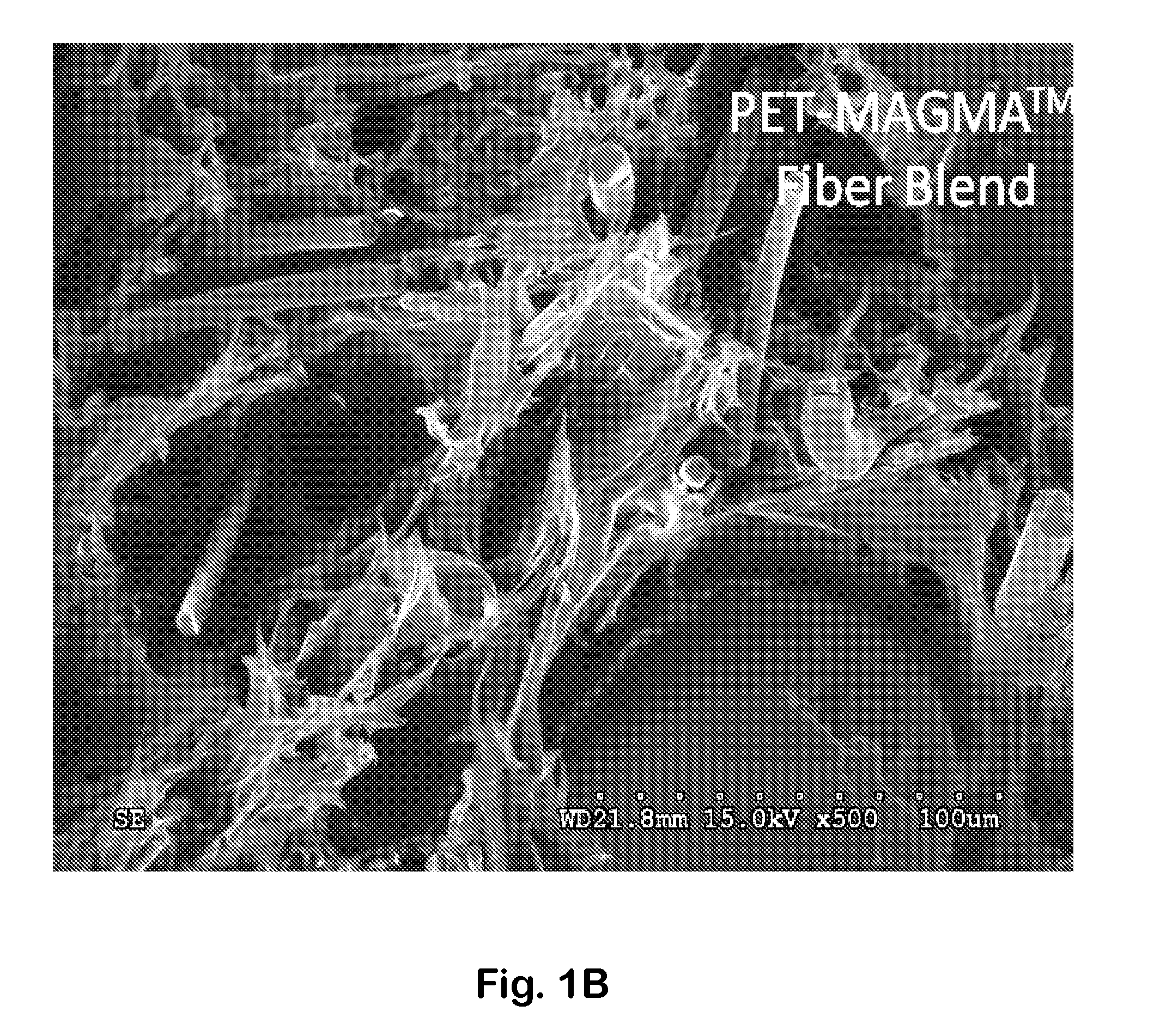Engineering plastic / inorganic fiber blends as lost circulation materials
a technology of inorganic fiber and lost circulation materials, applied in the direction of sealing/packing, chemistry apparatus and processes, wellbore/well accessories, etc., can solve the problem of difficult control of particle mixture size distribution, and achieve the effect of reducing the loss of fluid circulation
- Summary
- Abstract
- Description
- Claims
- Application Information
AI Technical Summary
Benefits of technology
Problems solved by technology
Method used
Image
Examples
example 1
Engineering Plastic-Inorganic Fiber Blend (EPIFB) Formulation
[0035]Five example engineering plastic-inorganic fiber blends (EPIFBs) are shown in Table 1. EPIFB 1 through EPIFB 5 were created using recycled polybutylene terephthalate (PET), fine basalt fibers (BF), and precipitated calcium carbonate (PCC) in a one-step extrusion process. During extrusion, the PET was fed upstream, and BFs were side-fed through a side-stuffer. For mixtures that included PCC, the PCC was tumble-mixed first, and the PCC was added along with the PET. The components were melt-blended and extruded in a co-rotating twin screw extruder (Micro 27—Leistritz Corporation, Allendale, N.J., USA) with a screw length / diameter ratio of 40:1. The extrusion temperature profile was 150, 190, 240, 240, 270, 270, 270, 250, 250, and 250° C. from the hopper to a strand die with two 3-mm strand openings, at a fixed 150 rpm screw rotating speed. The extrudate strands were drawn by a pelletizer, and cooled in a cold water bath...
example 2
Characterization of Basic Properties of EPIFBs
[0037]A portion of the extruded hot strands was collected on an aluminum plate immediately following extrusion. The material was hot-pressed to make two 4×4×0.2-inch thick plates (1 inch=2.54 cm), from which test samples were machined to measure blend properties. The blend density was determined by measuring size and weight of machined 1×1×0.2-inch samples. Flexural properties of the composite samples were measured according to ASTM D790-03 using an INSTRON 5582 Testing Machine (Instron Co., Grove City, Pa., USA). Compression strength at the 8% compression strain level was measured for each blend using the INSTRON 5582. TABLE 1 lists selected properties for various blends as shown. The tested blends had a density up to 2.12 g / cm3, an elastic modulus up to 11.3 GPA (1,630,000 PSI), and a compression strength up to 89.55 MPa (12,985 PSI).
[0038]Composite morphologies were imaged with a Quanta 3D FEG Dual Beam Scanning Electron Microscope (S...
example 3
[0041]Extruded EPIFB materials from EPIFB4 and EPIFB5 were granulated with a small industrial granulator using a USA standard 8-mesh screen. The material was then screened using USA standard testing sieves (4, 6, 8, 12, 16, 20, 40, 60, 100, and 200 mesh). The sieves were assembled with smaller mesh number screens (i.e., coarser sizes) on top. A sample of 400 g was screened each time. After screening, the material retained on each screen was collected and weighed to the nearest 0.01 gram using an analytical balance. The particle size distribution (PSD) was determined from the measured weight data. The PSD data for EPIFB4 and EPIFB5 are listed in Table 3.
[0042]
TABLE 3Particle Particle Size DistributionParticle Size DistributionSizeGranulated with a 8-meshRecombined with DifferentCategoryScreenParticlesMeshμmPSD-EPIFB4PSD-EPIFB5PSD-S1PSD-S2PSD-S320074000.5001001498.59.923.350.8606025018.524.9217.352.671.34042051.755.9240.3510.95.32084080.780.6270.636.0318.5516...
PUM
| Property | Measurement | Unit |
|---|---|---|
| temperature | aaaaa | aaaaa |
| pressures | aaaaa | aaaaa |
| diameter | aaaaa | aaaaa |
Abstract
Description
Claims
Application Information
 Login to View More
Login to View More - R&D
- Intellectual Property
- Life Sciences
- Materials
- Tech Scout
- Unparalleled Data Quality
- Higher Quality Content
- 60% Fewer Hallucinations
Browse by: Latest US Patents, China's latest patents, Technical Efficacy Thesaurus, Application Domain, Technology Topic, Popular Technical Reports.
© 2025 PatSnap. All rights reserved.Legal|Privacy policy|Modern Slavery Act Transparency Statement|Sitemap|About US| Contact US: help@patsnap.com


